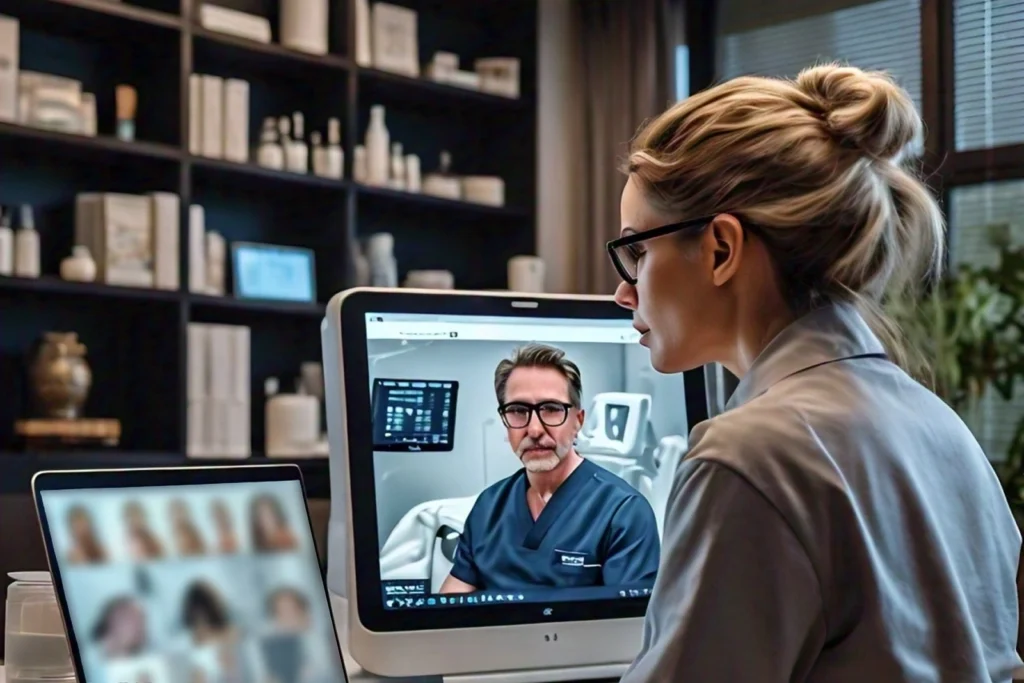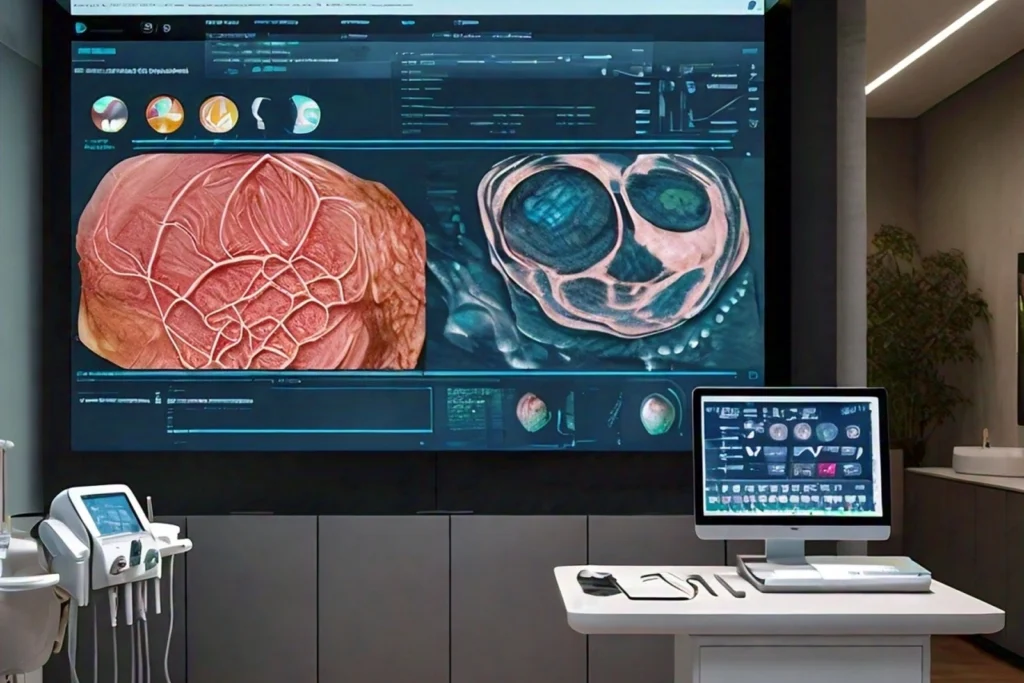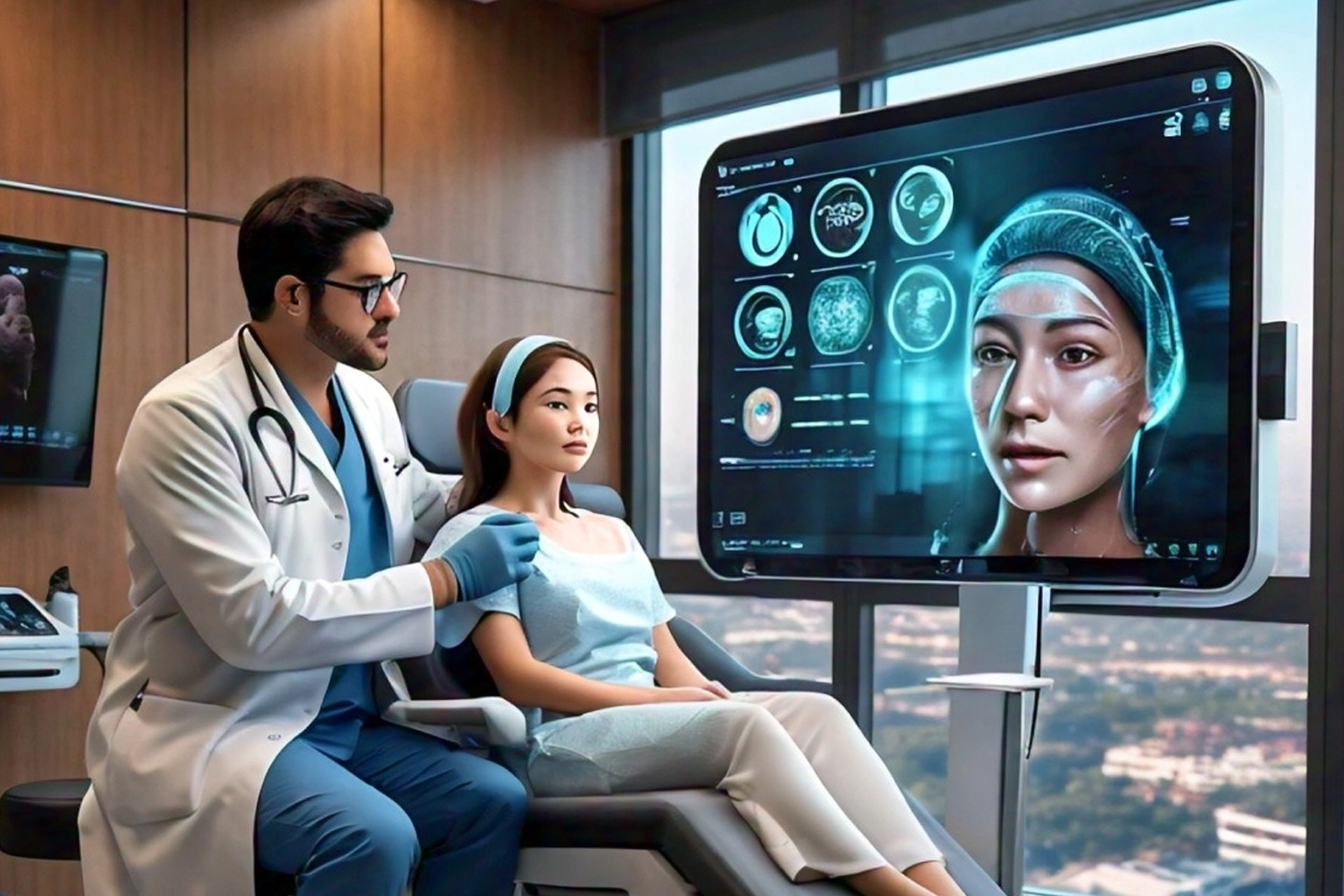Artificial intelligence (AI) has been making waves in various industries, and the field of medical aesthetics is no exception. With the help of AI, medical professionals can provide more personalized treatments for their patients. In this article, we will explore the top AI advancements in medical aesthetics and how they are revolutionizing the industry starting with Skin Analysis.
Skin Analysis

One of the most significant AI advancements in medical aesthetics is the use of AI-powered skin analysis tools. These tools use machine learning algorithms to analyze a patient’s skin and provide a detailed report on its condition. This allows medical professionals to create personalized treatment plans for their patients based on their specific skin concerns. With the help of AI, skin analysis has become more efficient, saving both time and money for patients and medical professionals.
But we’re not only seeing this in the professional realm, consumers are able to take advantage of the AI-powered skin analysis tool as well. More and more beauty brands are providing this AI tool on their website that helps consumers with personalized product recommendations for their skin. Saving them time, money, and frustrations of purchasing the wrong product.
Virtual Consultations

With the convenience of telemedicine, virtual consultations have become increasingly popular in the medical aesthetics industry. AI-powered virtual consultation tools allow patients to upload photos of their face or body and receive a personalized treatment plan from a medical professional. These tools use AI algorithms to analyze the photos and provide recommendations based on the patient’s concerns; saving time for both the patient and the medical professional but also allowing for more personalized treatment plans.
Predictive Modeling

AI is also being used to develop predictive models for various aesthetic procedures. These models use data from previous procedures to predict the outcome of a specific treatment for a particular patient. This allows medical professionals to have a better understanding of the potential results and make more informed decisions when creating treatment plans. With the help of AI, predictive modeling could become an accurate and reliable source, leading to better outcomes for patients.
Here are a few examples of how AI could help:
1. Customized Treatment Plans: As mentioned above, predictive modeling uses data from previous procedures to analyze factors such as patient age, skin type, and medical history. By considering these variables, AI algorithms can help medical professionals create customized treatment plans that are tailored to each patient’s specific needs. This personalized approach can improve the efficiency and effectiveness of aesthetic procedures, leading to better outcomes.
2. Risk Assessment: Predictive models can also assess the risk factors associated with certain aesthetic procedures. For example, before performing a facial rejuvenation treatment, AI algorithms can analyze a patient’s facial structure, skin condition, and potential complications. By identifying high-risk patients, medical professionals can take necessary precautions and minimize the chances of adverse effects or complications, thus improving patient safety and outcomes.
3. Outcome Prediction: AI-powered predictive models can estimate the potential outcome of a specific treatment for an individual patient. By analyzing historical data and considering various factors, such as the patient’s age, skin condition, and desired results, these models can provide medical professionals with valuable insights. This enables them to manage patient expectations and make informed decisions regarding the most suitable treatment options. By setting realistic goals and predicting outcomes accurately, patients are more likely to achieve satisfactory results.
Image Recognition

Another significant AI advancement in medical aesthetics is the use of image recognition technology. This technology allows medical professionals to analyze images of a patient’s face or body and identify any areas of concern. This is especially useful for procedures such as facial contouring or body sculpting, where precise measurements and symmetry are crucial. With the help of AI, medical professionals can now identify and address any asymmetries or imperfections, leading to more natural-looking results.
Personalized Treatment Plans

As we covered earlier, AI is also being used to create personalized treatment plans for patients based on their specific needs and concerns. By analyzing data from previous procedures and patient outcomes, AI algorithms can recommend the most effective treatments for a particular patient. This not only leads to better results but also saves time and money for patients who may have otherwise tried multiple treatments before finding the right one.
Patient Monitoring
Another significant AI advancement is patient monitoring. AI algorithms have the capability to continuously monitor patients during and after procedures, providing real-time insights to medical professionals. This technology enables early detection of potential complications or adverse reactions, ensuring prompt intervention and improving patient safety. By leveraging AI algorithms, medical professionals can receive alerts and notifications regarding any abnormal physiological changes or signs of distress in patients. This allows them to take immediate action and provide the necessary care. AI, for instance, can monitor vital signs such as heart rate, blood pressure, and oxygen levels, comparing them to normal ranges and identifying any deviations that may indicate a problem.
Conclusion
AI advancements in medical aesthetics are transforming the industry, allowing for more accurate, efficient, and personalized treatments for patients. From skin analysis to predictive modeling, AI is revolutionizing the way medical professionals approach aesthetic procedures. As technology continues to advance, we can expect to see even more AI applications in the field of medical aesthetics, leading to better outcomes for patients and a more efficient and effective industry as a whole.




